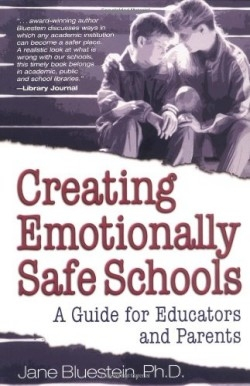Creating Emotionally Safe Schools
A Guide for Educators and Parents
In 1992, (long before the 1999 shootings at Columbine High School in Littleton, Colorado) almost half of over 65,000 students in the Houston, Texas, school system stated that they did not identify school as a safe place. Since the powerful human need for safety must be satisfied before individuals can accomplish other tasks (as stated by psychologist Abraham Maslow), it appears that schools are failing to identify or failing to address a significant obstacle to student learning.
In this well-researched and refreshingly direct book, the author provides a broad perspective on the topic of school safety. She conceptualizes the issue as encompassing the areas of academic, emotional, social, behavioral, and physical safety-not only of students but also of teachers and school administrators.
Herself an educator with over thirty years of experience including classroom teaching, teacher training, and training consultant to school districts, Bluestein avoids an accusatory tone while citing educational and psychological research on factors that affect student performance. She points out that although the research points the way to the creation of a safe environment that fosters learning, even the best teachers’ intentions break down in traditional student-teacher power relations and in the traditional role of schools where giving students knowledge is valued over the teaching of critical thinking-despite the 1997 finding of the Dayton Business Advisory Council that found that businesses valued people skills, flexibility, ambition, honesty, and positive attitudes as characteristics of employees over basic math, computer, or writing skills or the understanding of business economics.
Having identified what she considers the safety problems in schools, Bluestein addresses the ways in which teachers, school administrators, and parents can form cooperative, supportive partnerships that can address these problems and make the schools safe and truly educational environments for more students. She points out that the creation of emotionally healthy schools is not incompatible with the presence of respectful relationships between students, teachers, administrators, and parents; with academically challenging curricula; or with holding students accountable for their behavior.
While she recognizes and acknowledges the difficulty of systemic change, the author asks the seminal question, “How attached are we to traditions we know to be ineffective?”
Reviewed by
Carol K. Oyster
Disclosure: This article is not an endorsement, but a review. The publisher of this book provided free copies of the book to have their book reviewed by a professional reviewer. No fee was paid by the publisher for this review. Foreword Reviews only recommends books that we love. Foreword Magazine, Inc. is disclosing this in accordance with the Federal Trade Commission’s 16 CFR, Part 255.

